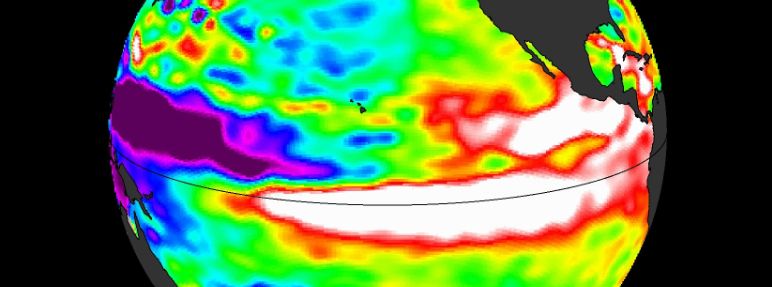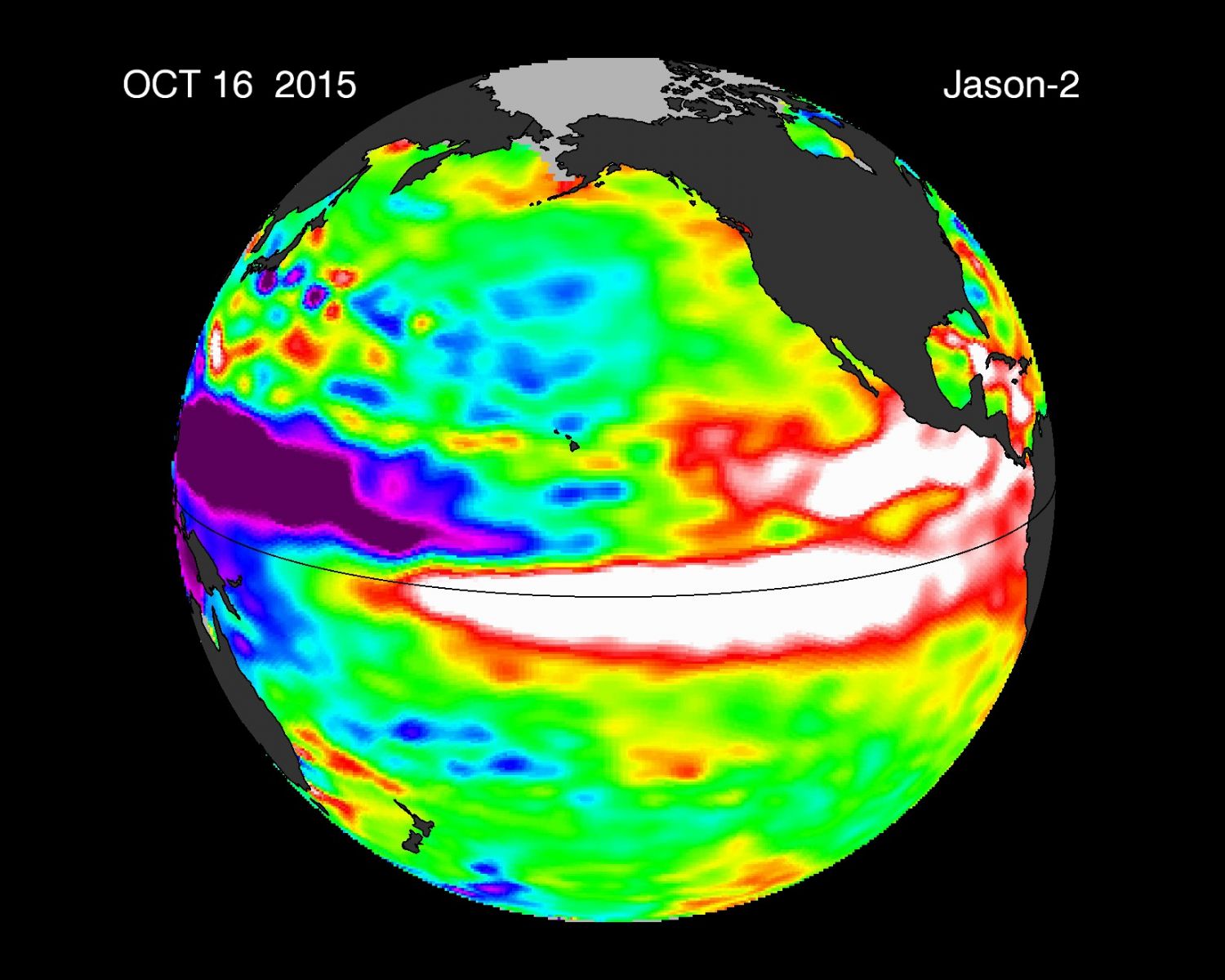NASA ready to observe 2015/16 El Niño in unprecedented details

The periodical El Niño weather phenomena, known to affect the climate of our planet every few years, causing and enhancing extreme weather patterns, has already received a lot of attention this year, and will be better observed from space than any other El Niño before, NASA announced on October 19, 2015.
When an unusually warm water mass, up to 2 to 3 °C (4 to 5 °F) higher than average, develops in the eastern tropical Ocean, this condition is called El Niño. The anomaly affects the ocean environments, but also causes extreme weather, such as Californian floods or severe drought in Australia, around the globe.
.jpg)
In this side-by-side visualization, Pacific Ocean sea surface height anomalies during the 1997-98 El Niño (left) are compared with 2015 Pacific conditions (right). The 1997 data are from the NASA/CNES Topex/Poseidon mission; the current data are from the NASA/CNES/NOAA/EUMETSAT Jason-2 mission (See animation). Image credit: NASA/JPL-Caltech
The 2015/16 El Niño is already very strong and experts expect it will be equal to the well-know strongest event of 1997/98. NASA's current orbiting Earth observatories were all launched after 1997, and NASA has made a significant progress over the last twenty years in gathering and analyzing El Niño data.
"El Niño is a fascinating phenomenon because it has such far-reaching and diverse impacts. The fact that fires in Indonesia are linked with circulation patterns that influence rainfall over the United States shows how complex and interconnected the Earth system is," said Lesley Ott, research meteorologist at NASA's Goddard Space Flight Center, Greenbelt, Maryland.

Latest El Niño watch data, October 16, 2015. Image credit: NASA JPL
Today, researchers have both satellite observations data and supercomputing models at their disposal to analyze the weather phenomena in previously unseen details. During the winter season of 2015, NASA's scientists will share the latest discoveries as and imagery El Niño details as they arise.
One of the things to be studied is the year-to-year variability for fire seasons in the western US, Amazon and Indonesia. El Niño event could also impact the yearly variability of the ground-level pollutant ozone responsible for severely affecting human health. Researchers will also strongly focus on El Niño's impact on the drought conditions across California.
"We still have a lot to learn about these connections, and NASA's suite of satellites will help us understand these processes in a new and deeper way," said Ott.
.jpg)
Latest sea-level residuals as observed by Jason-2, October 16, 2015. Image credit: NASA JPL
A number of NASA's satellites monitor sea surface temperature, surface currents, atmospheric winds and ocean color, and the joint NASA/NOAA/CNES/EUMETSAT Jason-2 satellite measures sea surface height, which is very important for quantifying the heat stored and released by the oceans during El Niño.
NASA's Global Precipitation Measurement mission provides worldwide precipitation measurements every three hours. NASA's Soil Moisture Active Passive mission measures soil moisture in the top layer of land. Both of these satellites are useful for monitoring drought, improving flood warnings and watching crop and fishing industries.
The satellites also help scientists monitor the global impact of El Niño, as the warmer than normal eastern Pacific Ocean generates worldwide consequences related to natural disasters, such as fires and floods. El Niño phenomena changes storm tracks, cloud cover and other weather patterns which have devastating effects on fisheries and other industries.
"NASA is at the forefront in providing key observations of El Niño and advancing our understanding of its role in shaping Earth's weather and climate patterns," said Duane Waliser, chief scientist of the Earth Science and Technology Directorate at NASA's Jet Propulsion Laboratory in Pasadena, California.
Featured image: El Niño, latest watch data, October 16, 2015. Image credit: NASA JPL

2016mansoon will be effected on INDIA yes or no.I thing YES.What’s NASA Comment.l want reply.Thanks.
Fascinating reviews about the EL NINO. What will the further effects of this EL NINO in Asia and its weather, Is the present Catastrohpy in Chennai is its effect on weather?